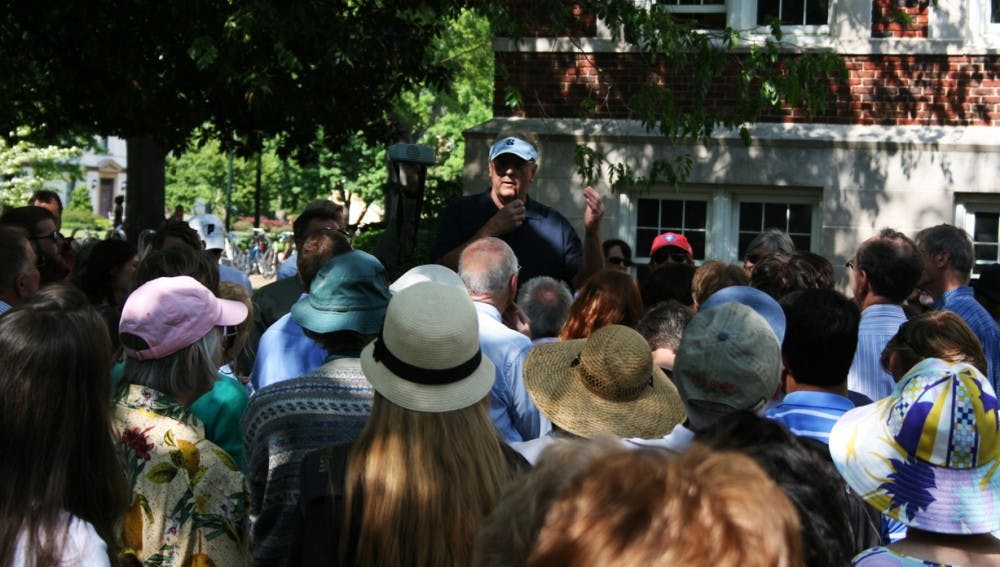More than 70 people met on the steps of Wilson Library on Thursday afternoon to get to understand the roots of UNC’s history — through its trees.
Michael Dirr, professor emeritus of horticulture at the University of Georgia, led the tour with University Forest Manager Tom Bythell.
The tour served as part of Wilson Library’s new exhibit, “Noble Trees, Traveled Paths: The Carolina Landscape Since 1793,” which allows visitors to look at UNC in a way that many take for granted every day.
The exhibit uses drawings, photographs and historical documents to show the evolution of campus through the years.
The exhibit will continue through May 31.
American Elm
Ulmus americana
Once a common tree that lined American streets, the American elm is now fairly isolated.
The relatively few trees that are left escaped the clutches of Dutch elm disease, a fungal disease that is carried by certain types of beetles. When the beetles inhabit the trees, a fungus makes its way through the tree.
UNC’s American elm sits between Peabody and Phillips halls. The University’s grounds department is working to plant more disease-resistant elms, like the Princeton elms near New East.
American elm grows in a variety of places, including wet flats where standing water builds up in the fall and spring.
Tulip Poplar
Liriodendron tulipifera
A common tree in North Carolina, the tulip poplar is most recognized at UNC by another name: the Davie Poplar.
More than 200 years old, the tree was named for Revolutionary War veteran and UNC founder William R. Davie. According to legend, many of the first trustees stayed under the shade of the tree as they decided on the right spot for the University.
It’s said that as long as the tree stands, so will the University. The tree is now held up with cables and is full of concrete.
The Davie Poplar has two descendants close by in McCorkle Place. Davie Poplar Jr. was planted by the class of 1918, and Davie Poplar III was grown from a seed of another Davie tree and planted in 1993.
Fort McNair Red Horsechestnut
Aesculus x carnea ‘Fort McNair’
Firstly, it has nothing to do with horses.
For a time, horsechestnuts were common at UNC. But after dying of old age, many weren’t replaced.
The grounds department has been trying to increase the University’s stock of horsechestnuts, Fort McNair being the first.
Located in McCorkle Place, the medium-sized tree was picked for its resistance to certain fungal diseases. It can be recognized by its chestnut-brown color and sticky buds.
Known for its pink flowers with yellow throats, the Fort McNair usually has five finger-like green leaves that branch out from a common point.
Contact the University Editor at udesk@unc.edu.



